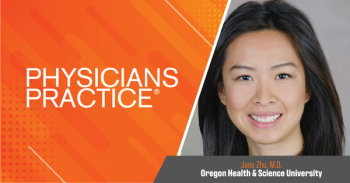
Ways to Keep Your Private Practice Afloat
Here are a few ways private practices can overcome the onslaught of MACRA and other outside factors that are threatening their existence.
Recent estimates place the number of doctors remaining in private practice to be around 30 percent and it is predicted that trend will continue.
For years, economic stresses escalated for smaller practices as overhead costs soared and reimbursements stagnated. And now in more recent years, practices are being further assailed with increasing regulatory burdens and costs. It is further predicted that most small practices will suffer negative reimbursements under the new Medicare Access and CHIP Reauthorization Act of 2015 (MACRA) rules when it rolls out in 2019. It is no wonder that doctors want out of the business of running a medical practice.
However, many doctors are standing strong in the face of these attacks. While many predict the demise of private practice, those standing strong will survive but it will take effort and adaptions to be made. We cannot just continue with the traditional model of care and expect to stay afloat.
How can private practices survive the coming onslaught?
- Perhaps, the most important first step is to know your practice’s finances. Study the accounts receivable and see how you are performing in your billing. If you do not have time to do this yourself, there are many companies out there who will perform a practice analysis for you. Many doctors rely on their billers and office managers to track this information. As the practice owner, you need to know it as well, otherwise you are probably losing money you should be collecting.
- After you evaluate your financials, fix any problems you find. You should be getting paid for almost all of your claims within 30 days. If you are not, find out why and make the necessary changes to ensure that you are.
- After making sure you maximize your reimbursements, review your overhead costs and see where you can make reductions. Don’t just make practice purchases with your usual vendors. Compare costs. Often, the cheapest supplies can be found on Amazon.com, but most physicians don’t think of buying medical supplies there. Also, look into joining a buying group to purchase supplies. These groups are often given discounts.
- Keep up with all the new regulations being passed. To begin with, if you don’t comply with these regulations, you can be fined or face negative adjustments on your payments. Make the necessary adjustments in your practice to avoid these financial losses. A good example is the Meaningful Use program. By participating in this program, doctors not only avoided financial penalties, but they were paid incentives in the tens of thousands of dollars. Don’t leave any money you may be entitled to on the table.
- If you need to purchase an expensive medical instrument, time your purchase right. Many companies will offer better discounts at the end of a quarter. Also, many vendors will tell you that if you don’t buy their product within so many days, you will lose the promotional discount. This simply is not true; they can give you the promotion whenever they like.
- Evaluate your staff. Are you over or under staffed? Watch the work your employees are doing and see where inefficiencies seep in. Angry patients are also a lost revenue to you. Do you have a receptionist that your patients don’t like? As doctors, we are trained to be compassionate. But, as the owner of a business, you need to run it as a business. You should have the right staff doing the right jobs otherwise you stand to lose money.
- Don’t waste money on advertising where it typically doesn’t work, such as newspapers. Look to establish social media presences where you can advertise for free or relatively cheaply.
- Talk with other physicians in your geographic location and you can share stories of what works and what doesn’t. Also, this may help establish coverage for when you need time off rather than paying an expensive locum tenems fill in.
- Consider alternative models of practice, such as Direct Primary Care, where the patient pays the doctor directly with no third-party involvement.
- Evaluate your third parties. Drop those who aren’t paying you well or on time.
Many doctors fear running their own practices, but it is still feasible. In our medical education, we were not taught any business skills and this fact cost many doctors to fail in this regards. We must empower ourselves by gaining this business knowledge and incorporating it into our practices. Using this knowledge and hiring the right people can mean the life or death of a medical practical practice. If more doctors embraced this model of care, we will all become more successful.
Dr. Linda Girgis MD, FAAFP, is a dedicated family physician in South River, New Jersey and its surrounding communities. Holding board certification from the American Board of Family Medicine, Dr. Girgis is affiliated with both St. Peter’s University and Raritan Bay Hospitals and also collaborates closely with several universities and medical schools, where she teaches medical students and residents.
Newsletter
Optimize your practice with the Physicians Practice newsletter, offering management pearls, leadership tips, and business strategies tailored for practice administrators and physicians of any specialty.







